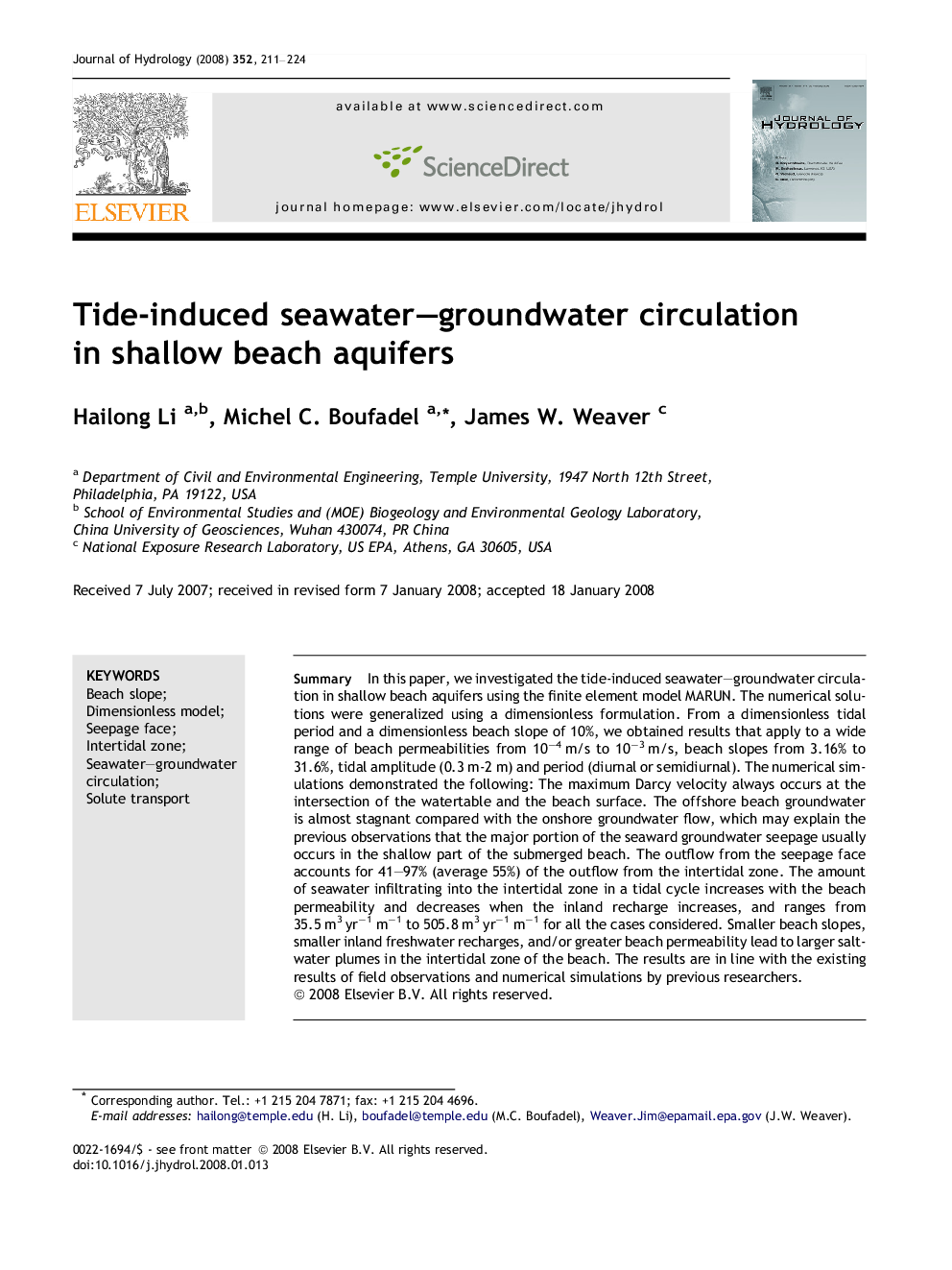| Article ID | Journal | Published Year | Pages | File Type |
|---|---|---|---|---|
| 4579312 | Journal of Hydrology | 2008 | 14 Pages |
SummaryIn this paper, we investigated the tide-induced seawater–groundwater circulation in shallow beach aquifers using the finite element model MARUN. The numerical solutions were generalized using a dimensionless formulation. From a dimensionless tidal period and a dimensionless beach slope of 10%, we obtained results that apply to a wide range of beach permeabilities from 10−4 m/s to 10−3 m/s, beach slopes from 3.16% to 31.6%, tidal amplitude (0.3 m-2 m) and period (diurnal or semidiurnal). The numerical simulations demonstrated the following: The maximum Darcy velocity always occurs at the intersection of the watertable and the beach surface. The offshore beach groundwater is almost stagnant compared with the onshore groundwater flow, which may explain the previous observations that the major portion of the seaward groundwater seepage usually occurs in the shallow part of the submerged beach. The outflow from the seepage face accounts for 41–97% (average 55%) of the outflow from the intertidal zone. The amount of seawater infiltrating into the intertidal zone in a tidal cycle increases with the beach permeability and decreases when the inland recharge increases, and ranges from 35.5 m3 yr−1 m−1 to 505.8 m3 yr−1 m−1 for all the cases considered. Smaller beach slopes, smaller inland freshwater recharges, and/or greater beach permeability lead to larger saltwater plumes in the intertidal zone of the beach. The results are in line with the existing results of field observations and numerical simulations by previous researchers.
